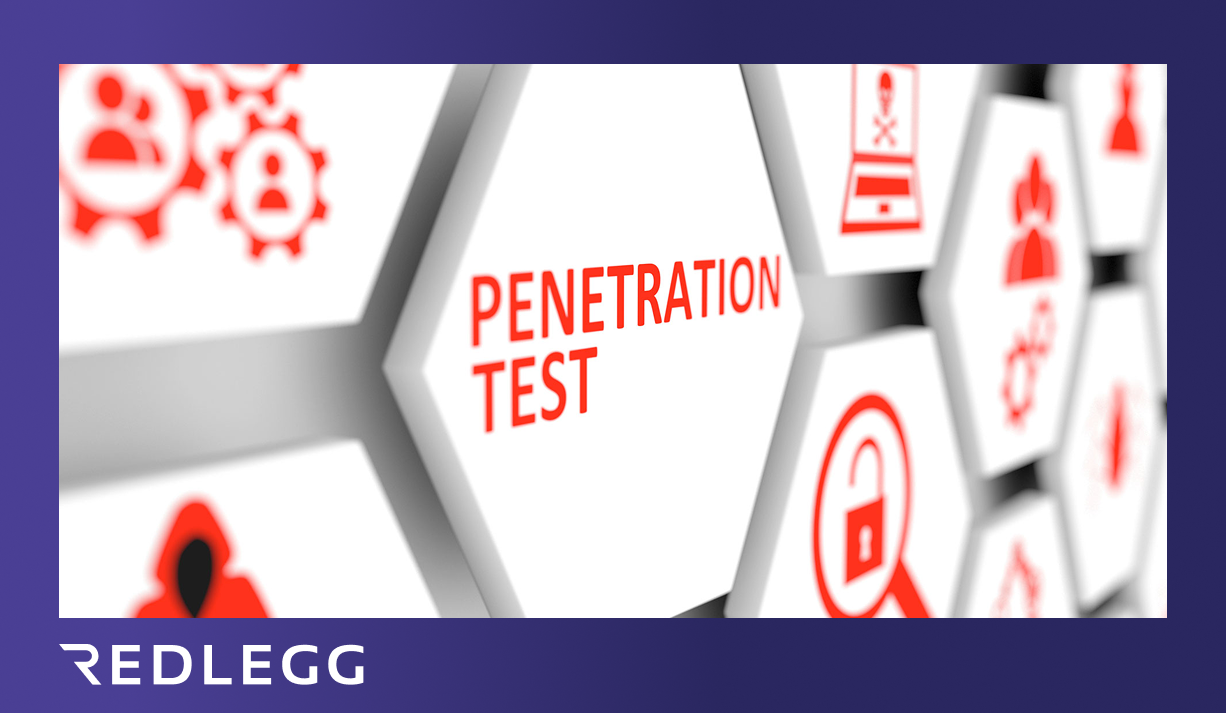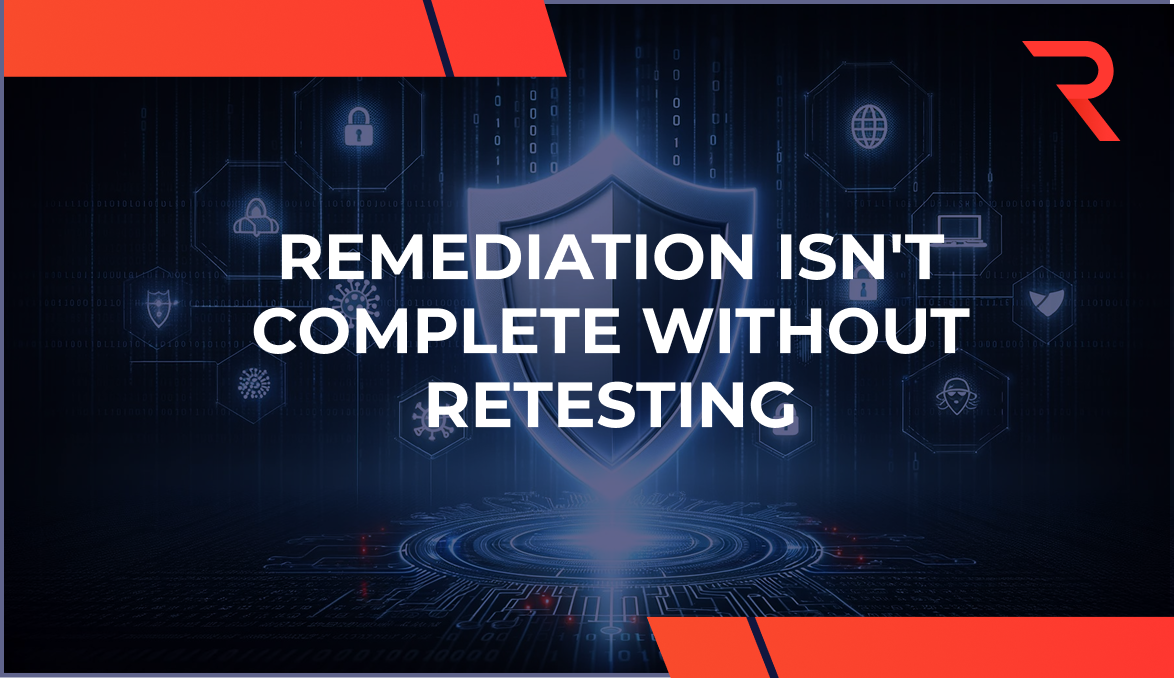16 min read
By: RedLegg Blog
Threat and vulnerability management program development involves shoring up your security with assessments and arming yourself with knowledge. Moreover, building a program is more of a continuous, ongoing effort than a quick-fix cybersecurity solution. Truly keeping your organization safe is a layered, multi-stage process.
Building a threat and vulnerability management program involves setting up and regularly testing your defenses, as well as educating your employees at every level about both best cybersecurity practices and types of attacks. Cybersecurity measures are at their strongest only when a business understands and implements a broad, long-term program that addresses security flaws in a rational manner and ensures proper staff training.
To build an effective threat and vulnerability management program, we recommend a comprehensive process that tackles every aspect of cybersecurity:
- Perform regular penetration testing.
- Observe a consistent patching schedule.
- Account for all IT assets and networks.
- Obtain current threat intel feeds.
- Learn about current vulnerabilities and work toward fixing them.
- Visualize data for broad understanding.
- Ensure proper tools are used.
- Add remediation clauses in service provider policies and procedures.
How to Build an Effective Threat and Vulnerability Management Program
1. Perform regular penetration testing
Ensuring network security is all about testing. If an information security expert hasn't tried punching a hole through your defenses yet, your security effectiveness is still considered unknown.
Penetration testing, or pen testing, helps businesses find and fix vulnerabilities that can be exploited by attackers. This accomplishes two things in one fell swoop. First, pen testing helps secure your network against any external attacks. Second, pen testing gives businesses unbiased and expert insight into their security infrastructure.
When coupled with other threat management processes like vulnerability assessment services, regular penetration testing has often proven to be an effective method of remediating security flaws in networks.
Access the Free Guide to Selecting the Right Test Vendor for Your Business.
2. Observe a consistent patching schedule
Software isn't perfect; expecting software and systems to be perfect would be both unreasonable and pointless. However, a slow and steady improvement is quite possible, which is where updates help.
Patching your software and systems as soon as updates are available will help secure your networks against attackers who exploit known vulnerabilities. Updates to software like operating systems and commonly used applications are regularly released by vendors.
Since updates can sometimes cause functionality issues, it is considered best practice to have a development and/or testing environment, that mirrors production, in which to test each update before applying it.
3. Account for all IT assets and networks
One long-forgotten piece of hardware or software can be your undoing. They might seem harmless, just sitting there in the corner with zero or close-to-zero purpose. However, those old programs or systems often represent weak links in your security infrastructure that potential attackers are just waiting to exploit.
Remember this: your organizational security posture is only as strong as the weakest points in your network. Also, it's hard to secure assets that you've forgotten about. Make sure that you account for all your assets, whether software or hardware.
4. Obtain current threat intel feeds
Knowledge can go a long way in helping keep your networks secure. Attackers can discover and latch on to vulnerabilities quickly, so you have no choice but to stay a step ahead of them if you're going to stop any incoming attacks.
Always follow up-to-date threat intelligence feeds so you can stay on top of newly discovered vulnerabilities and exploits. These feeds are maintained by experts who track potential threats and vulnerabilities. Having constant access to updated information will help you keep your network safe from even the most recently discovered threats.
5. Learn about current vulnerabilities and work toward fixing them
While vulnerability assessments and penetration tests help you sniff out security flaws in your network, the onus of fixing them is still on you. Moreover, as newer vulnerabilities are discovered and made public, you should ensure that your network won't fall victim to anyone exploiting them.
As you become more aware of current vulnerabilities, your team should plan and implement fixes for them. A combination of threat intelligence feeds and tools to help track vulnerabilities and fixes will help you maintain a bird’s-eye view of any security improvements your network may need.
6. Visualize data for broad understanding
Your employees are often the weakest links in your cybersecurity infrastructure. It's not enough to have your IT staff understand the potential threats and vulnerabilities out there: your entire organization needs to have a basic understanding of good cybersecurity practices.
Following less-than-ideal or downright irresponsible practices has been the downfall of many businesses. Even the most advanced security infrastructure cannot protect against instances of employees inadvertently letting attackers into their networks.
Make sure that your staff understands the risks lurking out there and isn't compromising your network security by being either lax, uninformed, or careless.
7. Ensure proper tools are used
There are various tools and applications that make your life easier when trying to build a working cybersecurity infrastructure. Use them. From managing updates to performing a preliminary scan for vulnerabilities, there are tools for everything.
Patch management tools and vulnerability scanners are key assets in your cybersecurity arsenal. While one keeps you current with the latest security patches, the other helps you find common flaws in your networks or systems.
Read more about vulnerability scans and pen testing tools.
8. Add remediation clauses in service provider policies and procedures
SLAs, or Service Level Agreements, help you manage expectations when dealing with a third-party service provider. Such agreements may gloss over specifics, however, allowing the service provider to set deadlines and time frames. However, an open vulnerability is a risk, and it remains one the longer it stays unfixed.
Having remediation clauses in SLAs will ensure that your service provider is required to fix vulnerabilities within a certain time frame. Not only does such a clause help you protect your networks better but it also grants you peace of mind that these open vulnerabilities and potential threats will be handled.
Implementing an Effective Threat and Vulnerability Management Program
Managing threats is a fluid, evolving process. There's no turnkey solution to cybersecurity, and anyone selling you one is probably trying to mislead you.
Remaining informed, regularly testing your security infrastructure, using the right tools, and instilling a culture of knowledge and information within your staff are the most important points of focus. If you can handle these aspects of security well – whether using in-house resources or an outsourced security services provider – you can rest assured that you're doing the best you can when it comes to securing your data and protecting your networks from malicious attacks.
Want more? Read about...
Featured Image: iStock.com/Chalabala








